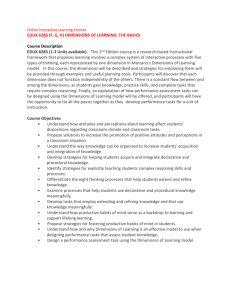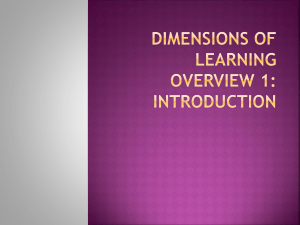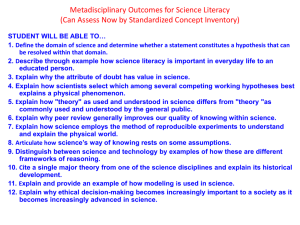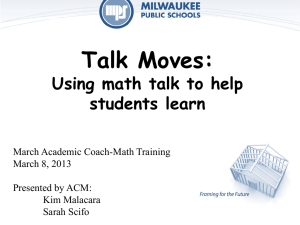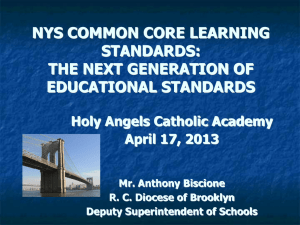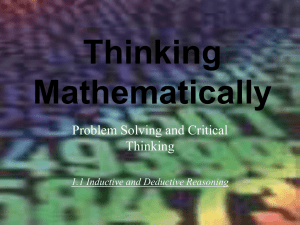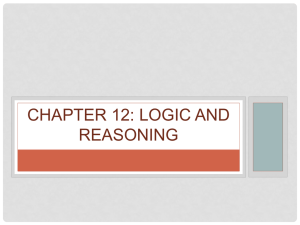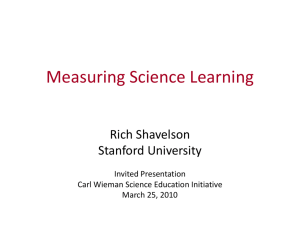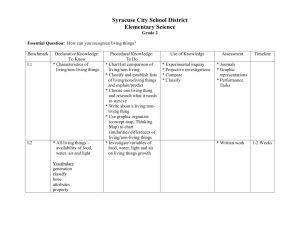Dimensions of Learning Overview 3
advertisement
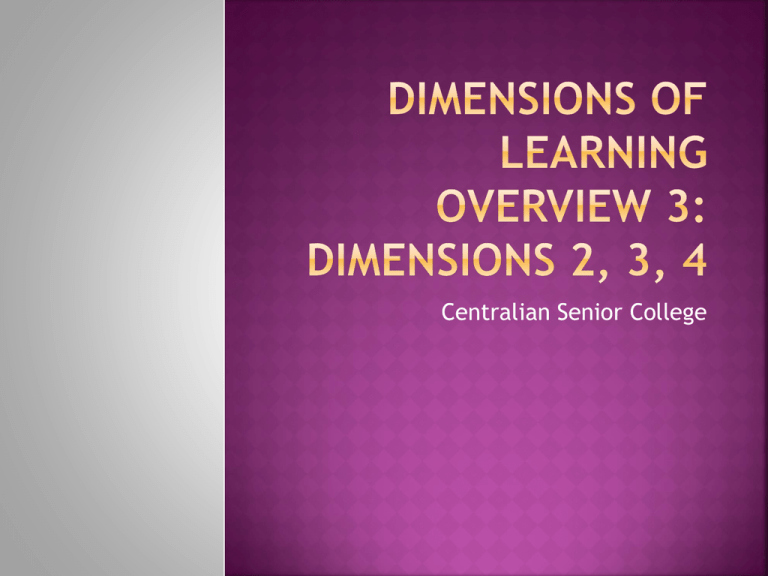
Centralian Senior College Declarative Knowledge Content or information, facts and concepts: things students know or understand Procedural Knowledge Processes or skills: things students can do Examples Add and subtract Write a paragraph An amoeba The conventions of punctuation When oppression meets resistance, conflict results Set up an experiment Read music The rules of basketball Shoot free throws A numerator Democracy What is the major difference in how we learn a concept and a skill? Declarative Knowledge: content and information Procedural Knowledge: skills and processes Construct Model Shape Internalize articulates the difference between the types of knowledge, how they relate to each other defines different types of declarative knowledge (descriptions, sequences, processes, episodes, principles, concepts) and distinguishes between macro and microprocesses (skills) For each of the three processes involved in acquiring and integrating knowledge (declarative and procedural), DoL offers a collection of strategies teachers can select from and a suggested series of steps Using knowledge requires more complex reasoning processes than required by Dimension 2 of learning (recall, reproduce knowledge) DoL’s identified 6 complex reasoning processes that can be applied to help them use knowledge meaningfully For each, gives five steps in how to teach the process so that students can learn how to do it themselves . . . Decision Making: generating and applying criteria to select from among seemingly equal alternative Problem Solving: overcoming constraints or limiting conditions that are in the way of pursuing goals Invention: developing unique products or processes that fulfil perceived needs Experimental Inquiry: generating and testing explanations of observed phenomena Investigation: identifying and resolving issues about which there are confusions or contradictions Systems Analysis: analysing the parts of a system and the manner in which they interact This occurs as learners examine and analyse knowledge and information in a way that: helps them make new connections discover or rediscover meanings gain new insights clarify misconceptions Results in learners being able to do more than recite definitions and give other examples. Involves them thinking about the information by using reasoning process that are more complex than those used to recognise or reproduce knowledge. These processes CHANGE the knowledge they have. . Classifying Abstracting Analysing Errors Comparing Eight Complex Reasoning Processes Analysing Perspectives Inductive Reasoning Deductive Reasoning Constructing support Comparing: Indentifying and articulating similarities and differences among items Classifying: grouping things into definable categories on the basis of their attributes Abstracting: Identifying and articulating the underlying theme or general pattern of information Inductive Reasoning: inferring unknown generalisations or principles from information or observations Deductive Reasoning: Using generalistions and principles to infer unstated conclusions about specific information or situations Constructing Support: building systems of support for assertions Analysing Errors: identifying and articulating errors in thinking Analysing Perspectives: identifying multiple perspectives on an issues and examining the reasons or logic behind each. 1. Help students understand the process: (the function/goal of it) 2. Give students a model for the process, and create opportunities for them to practice using the process. (the steps involved and examples) 3. As students study and use the process, help them focus on critical steps and difficult aspects of the process (examples and suggestions of how to deal with elements) 4. Provide students with graphic organisers or representations of the model to help them understand and use the process 5. Use teacher-structured and student-structured tasks (modeling to independent work) Using DoL as the framework for a Professional Learning Project is working well . . . 1. Identify the Issue: How can we improve students’ critical literacy skills in English, specifically their ability to analyse a writer’s use of linguistic and visual techniques to achieve their purpose and appeal to their audience. 2. Plan the DoL Project: major issue for students as being the gap between their declarative knowledge of the techniques writers use and their procedural ability to analyse how a particular writer uses these techniques for specific effects. In DoL terms: Able to gain and integrate the knowledge of techniques (they can explain their purposes and give examples) – Dimension 2 Cannot use this knowledge meaningfully in new situations – Dimension 4. In order to do this, we need to focus on Dimension 3, helping them to extend and refine their knowledge. explicitly teach that process as a way of getting to grips with one aspect of extending and refining their critical literacy knowledge talk to each other about why we’ve chosen that process and how we might use the strategies/steps to teach it use the specific steps given to construct learning activities that teach using this process to think more deeply about a critical literacy task trial them and share the results Belinda: Comparing and Inductive Reasoning re: Color Purple Al: Inductive Reasoning, Classifying, Abstracting re: Lear and Critical Reading Take 3 minutes to stop and think about where next the school could go with this / any implications for the more explicit whole school teaching of complex reasoning processes / any questions that need addressing: I could . . . We could . . . We would need to . . . Students might . . . The school would . . . We might . . .
